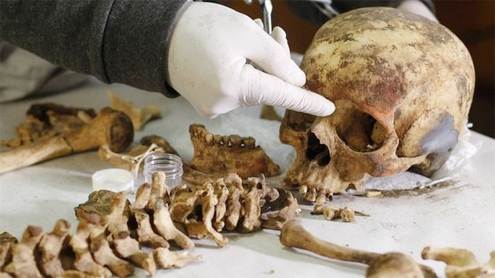
Archaeologists in Peru have unearthed a royal tomb with treasures and mummified women from about 1,200 years ago.
The discovery north of Lima could shed new light on the Wari empire, which ruled in the Andes before the rise of the better-known Inca civilisation.More than 60 skeletons were inside the tomb, including three Wari queens buried with gold and silver jewellery and brilliantly-painted ceramics.Many mummified bodies were found sitting upright – indicating royalty.
The archaeologists say the tomb was found in El Castillo de Huarmey, about 280km (175 miles) north of Lima.”We have found for the first time in Peruvian archaeological history, an imperial tomb of the Wari culture,” co-director of the project Milosz Giersz was quoted as saying by Reuters news agency.”The contents of the chamber consisted of 63 human bodies, most of them women, wrapped in funerary bundles buried in the typical seated position, a native Wari pattern.”Forensic archaeologist Wieslaw Wieckowski says the way other bodies were positioned indicated human sacrifice.
“Six of the skeletons we found in the grave were not in the textiles. They were placed on the top of the other burials in very strange positions, so we believe that they were sacrifices,” he said.”The fact that most of the skeletons were of women and the very rich grave goods, leads us to the interpretation that this was a tomb of the royal elite and that also changes our point of view on the position of the women in the Wari culture.”
The archaeologists spent months secretly digging through the burial chambers amid fears that grave robbers would find out and loot the site.The Wari civilization thrived from the 7th to 10th centuries AD, conquering all of what is now Peru before a mysterious and dramatic decline.The Wari people had their capital near the modern-day Ayacucho, in the Andes. – BBC












